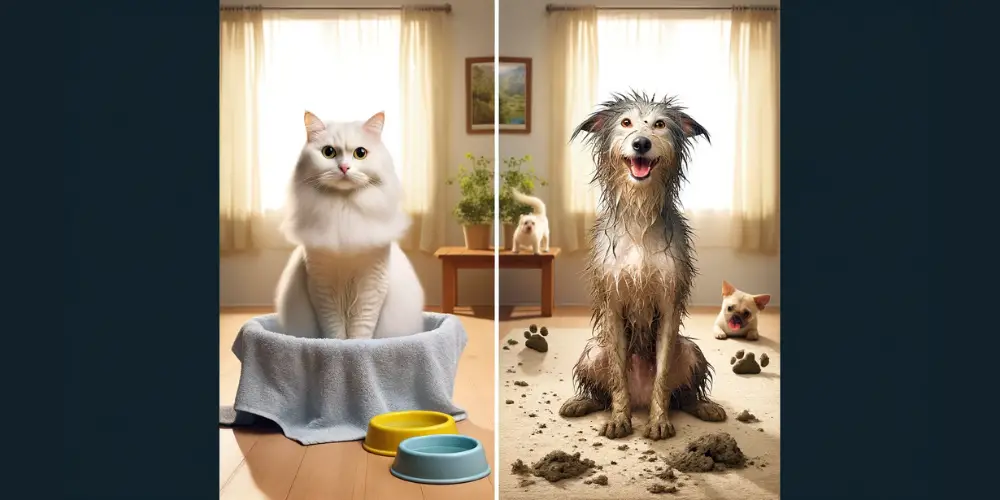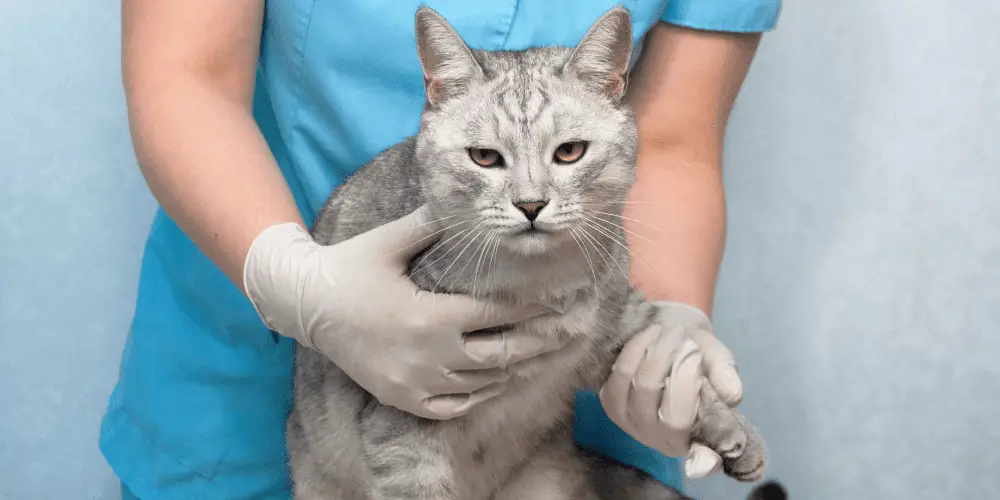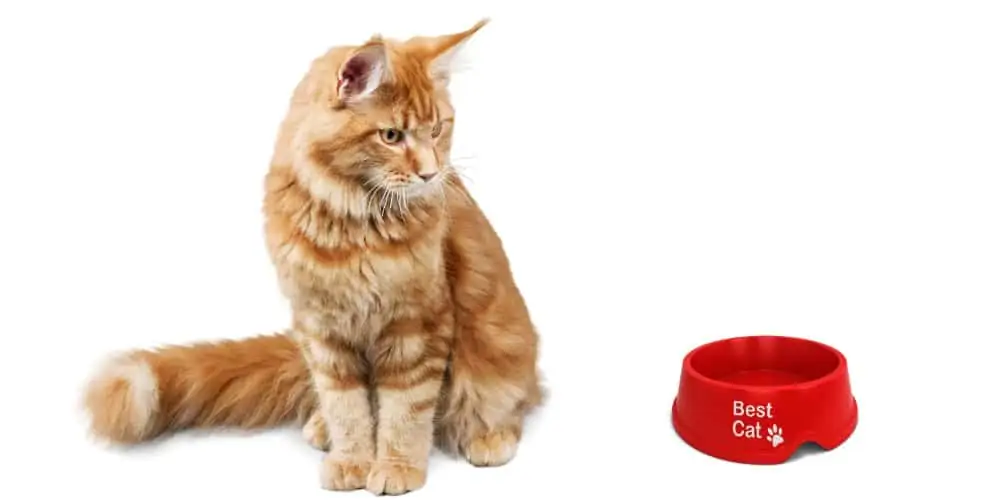The age-old debate of whether cats are cleaner than dogs can be settled:
But, before cat lovers celebrate or dog enthusiasts concede, there’s more to pet hygiene than meets the eye.
Dive in to uncover why the answer isn’t just about fur deep and what every pet owner needs to know.
Understanding Pet Grooming Habits

The Science of Self-Grooming in Cats
Cats are widely recognized for their exceptional grooming habits. Their grooming routine is more than just a means to look presentable; it’s an intricate behavior deeply rooted in their biology.
Cats meticulously clean their fur using their tongues, teeth, and paws, which serve multiple purposes.
This behavior helps them maintain a clean coat and aids in parasite removal and body temperature regulation.
Such diligent grooming is crucial for eliminating scents that could potentially attract predators, which is vital for their survival in the wild.
Moreover, grooming is not solely about physical health; it significantly impacts a cat’s mental well-being.
Engaging in grooming offers cats a sense of calm and comfort, effectively reducing stress.
Observing a cat groom itself after eating or playing indicates its need to relax and “reset.” This aspect of grooming highlights its importance in providing cats with emotional stability and a sense of security.
For cat owners curious about how breed-specific traits influence grooming habits, exploring the variety of cream-colored cat breeds can provide insights into the diverse world of feline hygiene practices.
Dog Grooming Demystified
Unlike cats, dogs have a distinct approach to grooming. While they perform self-grooming tasks like licking their paws and fur, they largely depend on their human caretakers for cleanliness.
This care includes routine baths, regular brushing, and, for certain breeds, professional grooming services.
An owner’s role in maintaining a dog’s hygiene is crucial. Regular grooming goes beyond just achieving a lustrous coat; it’s vital for the dog’s overall well-being.
Brushing not only spreads the natural oils across the coat, enhancing its shine, but also prevents tangles and minimizes shedding.
Proper bathing, provided it’s not excessively frequent, plays a key role in maintaining healthy skin and preventing parasite infestations.
Comparative Behavioral Analysis

When considering pet cleanliness, it’s essential to understand the natural habits and environmental factors that influence the hygiene of cats and dogs.
This comparison sheds light on their instinctual grooming behaviors and how being indoors versus outdoors affects their cleanliness. Here’s a straightforward look at these factors side by side:
| Aspect | Cats | Dogs |
|---|---|---|
| Instinctual Behaviors | Engage in frequent self-grooming using their barbed tongues, effectively keeping their coat clean and reducing stress. | Less inclined to self-groom to the same extent; often require assistance from owners for tasks like bathing and brushing. |
| Environmental Influences | Indoor cats tend to be cleaner due to limited exposure to outdoor dirt and parasites. Outdoor cats may require more frequent grooming. | Both indoor and outdoor dogs can get dirty, but outdoor dogs are more exposed to elements that can affect their cleanliness. Regular grooming is essential regardless of living conditions. |
This table highlights the natural grooming habits of cats and dogs and how their living environment impacts their cleanliness. It gives pet owners a concise overview, focusing on practical information relevant to pet care.
Health Implications of Pet Hygiene

Practical Grooming Guides

Essential Grooming Tools for Cats and Dogs
Selecting the appropriate grooming tools is essential for the well-being of your pets.
For cats:
- Fine-toothed Comb: Ideal for detangling fur and preventing knots.
- Brush: A bristle or rubber brush effectively removes loose hair, aiding in their natural grooming process.
- Nail Clippers: Use clippers designed specifically for cats to maintain claw health.
For dogs:
- The grooming toolkit varies with the breed and coat type. Essential tools include:
- Slicker Brush: Essential for long-haired breeds to remove tangles and prevent matting.
- De-shedding Tool: Crucial for dogs with double coats to minimize loose fur in your home.
- Nail Clippers and Toothbrush: Ensure your dog’s nails are trimmed, and teeth are clean for overall health.
- Ear Cleaning Solutions: To keep your dog’s ears clean and infection-free.
These tools facilitate grooming and contribute to your pets’ overall health by supporting their natural cleaning behaviors and preventing common health issues.
Selecting the right grooming tools is essential, especially when dealing with specific behaviors like why cats drag things into their litter boxes, which can impact the cleanliness of their grooming space.
Step-by-Step Grooming Techniques
For Cats:
- Brushing: Start with a comb to gently work through any knots, moving in the direction of hair growth. Follow with a brush to remove loose hair and stimulate the skin.
- Nail Trimming: Get your cat accustomed to having their paws handled. Press the paw to extend the nails and trim only the tips, avoiding the quick.
- Bathing: Most cats don’t require frequent baths, but if necessary, use a cat-specific shampoo and ensure the water is lukewarm. Always keep the head dry to reduce stress.
For Dogs:
- Brushing: Frequency and tools vary by coat type. Use gentle strokes, and be careful around sensitive areas like the face and paws.
- Bathing: Use dog-specific shampoo and lukewarm water. Be mindful of the water temperature and pressure; never spray water directly on the face.
- Nail Trimming: Like with cats, acclimate your dog to paw handling. Trim nails carefully, avoiding the quick, which is easier to spot in dogs with clear nails.
- Ear Cleaning: With a vet-recommended solution, clean the outer ear gently, avoiding deep insertion into the ear canal.
Expert Advice on Pet Hygiene
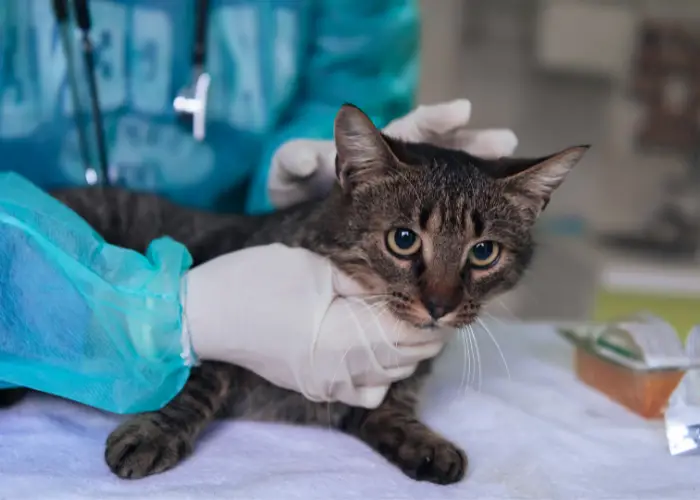
Veterinary Insights on Common Misconceptions
Veterinarians often encounter myths about pet hygiene. One common misconception is that cats never need bathing.
While cats do an excellent job grooming themselves, certain situations, such as getting into something sticky or toxic, may necessitate a bath.
Another myth pertains to dogs and bathing frequency; overbathing can strip their coat of natural oils, leading to dry skin and irritation.
Veterinary insights often debunk common misconceptions, such as the reasons behind peculiar cat behaviors, like why cats might bite their claws or nails, shedding light on their hygiene practices.
Professional Grooming Tips
Professional groomers emphasize the importance of consistency in grooming routines. Regular grooming keeps your pet’s coat in good condition and allows you to check for abnormalities like lumps, bumps, or skin issues.
They also stress the importance of using the right tools and techniques for your pet’s specific breed and coat type to avoid injury and ensure effective grooming.
Advanced Odor Control Strategies
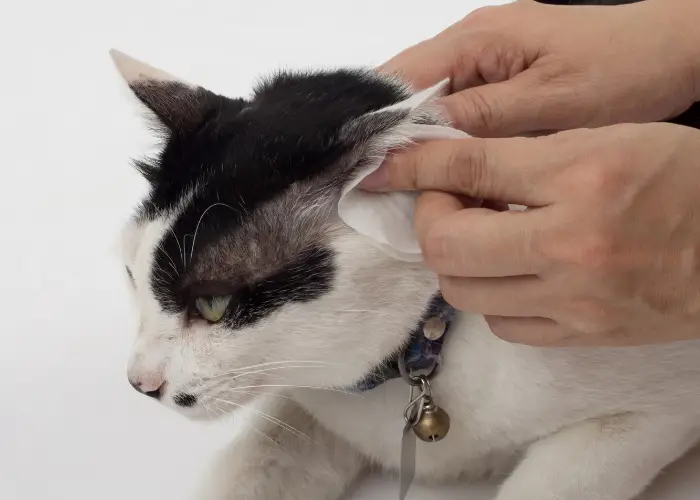
Understanding and Managing Pet Odors
Pet odors can stem from various sources, not just accidents or lack of grooming. Saliva, paw sweat, and natural oils in the fur can all contribute to a pet’s distinctive smell.
Additionally, factors such as diet, health conditions, and the cleanliness of their living environment can significantly affect their odor.
- Regular Grooming: Consistent grooming is crucial for odor control. This includes brushing, bathing correctly, and cleaning areas like the ears and paws where odors can linger.
- Dietary Considerations: What your pet eats can influence their scent. High-quality, well-balanced diets can reduce odors, while poor-quality foods might exacerbate them.
- Health Checks: Sometimes, persistent odors can indicate underlying health issues. Regular veterinary check-ups are essential to rule out or treat conditions causing unpleasant smells.
DIY Solutions and Professional Products
DIY Solutions:
- Baking Soda: A natural deodorizer, baking soda can be lightly sprinkled on carpets, pet bedding, and even directly on your pet’s fur (followed by a thorough brushing).
- Vinegar and Water Mix: Ideal for cleaning surfaces and even as a fabric spray, a solution of equal parts vinegar and water can help neutralize odors without leaving a strong vinegar scent behind.
Professional Products:
- Enzymatic Cleaners: These are specially formulated to break down pet waste and odor molecules, making them a powerful tool for dealing with accidents and lingering smells.
- Air Purifiers: Devices equipped with HEPA filters and activated carbon can capture dander, fur, and odor particles, significantly improving indoor air quality.
Addressing Overgrooming and Hygiene Issues
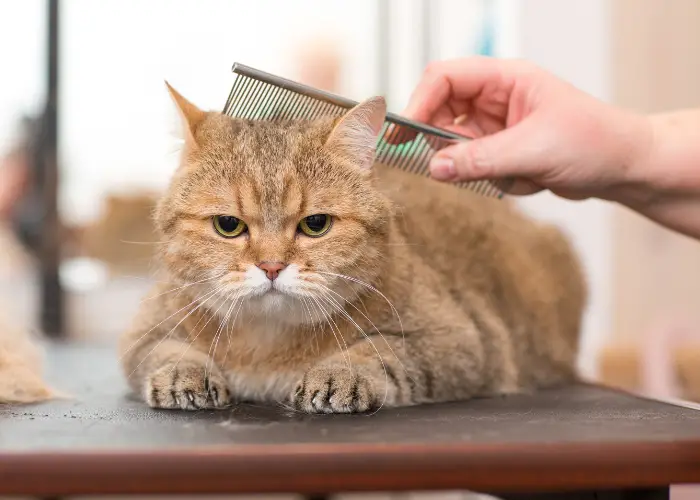
Recognizing and Managing Overgrooming in Pets
Overgrooming, characterized by excessive licking, biting, or hair removal, can be a sign of stress, allergies, or underlying health issues in pets.
Observing your pet’s behavior and consulting with a veterinarian if overgrooming is suspected is essential.
Management strategies may include environmental enrichment to reduce stress, dietary changes, or medical treatment for skin conditions.
Dealing with Common Pet Hygiene Problems
- Hairballs in Cats: Regular grooming helps minimize hair ingestion, reducing hairball formation. Specialized cat foods and supplements can also aid in hairball control.
- Matting in Dogs: Prevent matting with regular brushing and detangling, especially in long-haired breeds. Severe mats may require professional grooming services to be safely removed.
- Dental Hygiene: Both cats and dogs can suffer from dental issues, contributing to bad breath and other health problems. Regular dental check-ups, cleanings, and at-home tooth brushing are vital.
Interactive Content: Finding the Right Pet for Your Lifestyle
Quiz: Is a Cat or Dog Better for Your Home Hygiene?
This interactive quiz will consider your living space, daily routine, and hygiene preferences to suggest whether a cat or a dog might suit your lifestyle.
Questions will cover your tolerance for shedding, time available for grooming, and preferences regarding pet interaction and care responsibilities.
- Do you prefer a pet that is self-cleaning?
- Are you concerned about pet hygiene and shedding?
- How much time can you dedicate to grooming your pet?
- Are you comfortable with a pet that requires less bathing?
- Do you mind regularly cleaning a litter box or prefer outdoor pet waste?
- Are you looking for a less susceptible pet to harmful bacteria and parasites?
- Are you open to a more independent pet maintaining its hygiene?
If you answer “yes” to preferring a self-cleaning pet that requires less bathing and is less susceptible to harmful bacteria and parasites, a cat might suit your lifestyle.
If you answer “no” to these questions and prefer a pet that is more reliant on human care and grooming, a dog might be a better fit for your home hygiene preferences.
Video Tutorials: Basic Grooming Techniques
Engaging video content can demystify grooming for both new and experienced pet owners. These tutorials will cover:
- For Cats: Demonstrations on safe brushing techniques, the correct way to trim nails without causing stress, and tips for the occasional bath, emphasizing the cat’s comfort and safety. Watch this video:
- For Dogs: Step-by-step guides on brushing different coat types, bathing protocols including water temperature and shampoo application, nail trimming without hitting the quick, and basic ear cleaning practices. Watch this dog grooming video
Conclusion
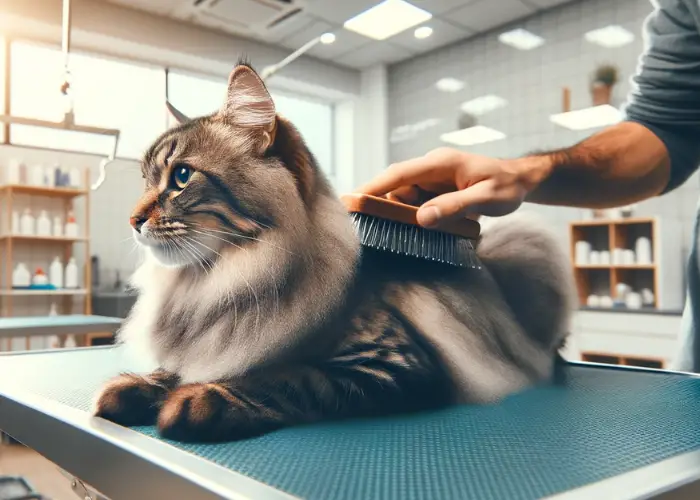
In this guide, we’ve traversed the intricate landscape of pet hygiene, dissecting grooming habits, health implications, and practical care strategies for cats and dogs.
Understanding and implementing these hygiene practices not only contributes to a cleaner, healthier home environment but also enhances our beloved pets’ well-being and quality of life.
We encourage pet owners to embrace regular grooming routines, stay informed about their pets’ health needs, and seek professional advice when necessary.
Remember, maintaining good pet hygiene is a continuous commitment that fosters a deeper bond between you and your pet, ensuring they remain a happy, integral part of your family.
X. FAQs
Q: How often should I bathe my dog? A: The frequency depends on the dog’s breed, coat type, and lifestyle. Generally, once a month is adequate, but consult a veterinarian for personalized advice.
Q: Can overgrooming be harmful to my cat? A: Yes, overgrooming can lead to skin irritation, hair loss, and stress. If you notice excessive grooming, it’s essential to consult a vet to determine the cause.
Q: Are scented grooming products safe for pets? A: While some pets may tolerate scented products well, others can be sensitive. Opt for pet-specific, hypoallergenic options, and observe your pet’s reaction.
Q: How can I reduce pet dander in my home? A: Regular grooming, using air purifiers, and maintaining cleanliness in pet bedding and common areas can significantly reduce dander levels.
